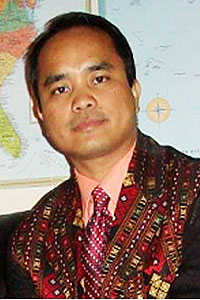Myanmar has witnessed some of the longest internal armed conflicts in the world, and despite several attempts to promote national harmony, a number of challenges remain.
The first is the disunity among the armed ethnic groups. When eight of these signed the Nationwide Ceasefire Agreement (NCA) in October 2015, it was seen by many as the culmination of more than two years of negotiations aimed at bringing an end to the country's long-running conflicts.
However, the deal fell short of a nationwide agreement as the other seven groups who were invited to the talks declined to sign due to disagreements over the issue of inclusivity in the peace process. Many also voiced distrust of Myanmar's semi-civilian government, headed by President Thein Sein, as well as its powerful military.
Since then, the peace process has largely stalled despite several cosmetic changes in the name of progress. Armed conflicts between the non-signatory groups and the Myanmar army have marred the peace process, of course. The governing National League for Democracy (NLD) also initiated the 21st Century Panglong Conference in late August last year but failed to convince the non-signatory groups to sign the NCA.
The NCA signatory groups initially expected the government would be able to bring on board the non-signatory groups at the earliest possible stage. They also anticipated that the non-signatory groups would eventually prefer to join the peace process rather than engaging in armed conflicts.
However, members of the Chiang Mai-based United Nationalities Federal Council (UNFC) have not given up their fundamental demand that the peace process be more inclusive.
Moreover, the chance of finding mutual agreement between UNFC members and the NLD government has been hampered by the continued armed clashes between the Myanmar army and members of the Northern Alliance -- the Kachin Independence Army (KIA), Arakan Army (AA), Myanmar National Democratic Alliance Army (MNDAA), and the Ta'ang National Liberation Army (TNLA) -- in the states of Kachin and Shan along the Myanmar-China border.
The government's efforts to convince the non-signatory groups to sign the NCA and join the peace process met with a further challenge in late February when the chairman of the United Wa State Army (UWSA) said that a "new path to peace" was necessary because the government's efforts to get other ethnic groups to sign the NCA had lost momentum.
The position of the UWSA is significant because it is the largest ethnic armed group with approximately 30,000 cadres. It also controls a significant swath of territory along the Myanmar-China border in Shan. In addition to its demand for federalism, the UWSA has demanded that the Wa Self-Administered Division be upgraded to a state.
The second challenge is Beijing's limited influence on the peace process. The advantage China has in Myanmar is that its participation and assistance is welcomed by ethnic armed groups, the NLD government, as well as the military establishment. But despite this wide acceptance, problems remain.
For example, despite several appeals and meetings with ethnic armed groups, the Myanmar military and the NLD government, Beijing has been unable to bring an end to the armed conflicts, particularly in Kachin and Shan.
There are allegations from some quarters that China is meddling in the internal affairs of Myanmar. There are also allegations, since the Thein Sein government era, that some armed groups have not signed the NCA because of interference from China.
The third challenge is the distrust between the Myanmar military and some ethnic armed groups, particularly the Northern Alliance (NA) members that have been engaging in armed conflicts, mostly since 2015.
The main suspicion of these NA armed groups is that the Myanmar military is not sincere about resolving the decades-old conflicts on a political level. The armed groups have alleged that the Myanmar military has been forcefully trying to neutralise them and seize control of their territories.
While the Myanmar military has demanded that the MNDAA, TNLA and AA all lay down their arms before they sign the NCA and participate in the peace process, the armed groups see this as unacceptable as they consider it tantamount to surrendering their people and territory.
On top of this, both the armed ethnic groups and the Myanmar army blame each other for causing thousands of civilians to have become internally displaced or made to flee across the border to China.
The fourth challenge, which is perhaps the most serious, is a lack of trust between the government and the military.
Though both sides have shown considerable respect for one another and tend to refrain from criticising each other publicly, the civilian government seems unable to prevail over the military when it comes to the specifics of the peace process. In her capacity as state counsellor and de facto leader, for example, Aung San Suu Kyi has been quite diplomatic in her dealings with the military establishment.
Though she has had several meetings with the military leadership over the peace process, she has apparently not been able to convince the military to end its operations along the Myanmar-China border.
Based on what has transpired thus far, the military is inclined to pursue disarmament, demobilisation and reintegration (DDR) rather than security sector reform (SSR).
To all intents and purposes, the military is maintaining its traditional role as the "guardian" and "protector" of the state.
Nehginpao Kipgen, PhD, is Assistant Professor and Executive Director of the Center for Southeast Asian Studies, Jindal School of International Affairs, OP Jindal Global University. He is the author of three books on Myanmar, including 'Democratisation of Myanmar'.
